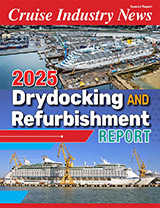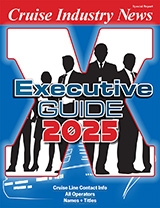The Port of Seattle has released its Seattle Waterfront Clean Energy Strategy, detailing the infrastructure upgrades and investments needed to support full electrification of buildings, vehicles, vessels and equipment across Port-owned properties.
Created in partnership with The Northwest Seaport Alliance (NWSA) and Seattle City Light (SCL), the strategy forecasts that electricity demand during peak operations will quadruple by 2050, making continued investment in clean energy infrastructure essential to meeting the Port’s long-term sustainability goals.
“Installing shore power at marine terminals so that cruise and cargo ships can turn off their engines while at dock is a key part of the Port of Seattle’s commitment to becoming the greenest Port in North America,” said Port of Seattle Commissioner Fred Felleman. “Our partnership with The Northwest Seaport Alliance and Seattle City Light is critical to ensuring there’s enough power to meet the increasing demand for bringing electricity to the waterfront to serve ferries, trucks, cargo handling equipment and the Coast Guard. I look forward to integrating these recommendations in collaboration with our waterfront neighbors so that we can align our capital programs to build a carbon neutral port for the future.”
“We’re very proud of our continued partnership with the Port of Seattle on the Seattle Waterfront Clean Energy Strategy,” said Seattle City Light General Manager and CEO Dawn Lindell. “By working together, we’re making waterfront and maritime electrification a reality for Seattle’s industrious port. By taking a holistic and innovative approach, we are able to work in tandem to ensure a clean energy future for the region.”
The Seattle Waterfront Clean Energy Strategy outlines how the Port of Seattle and its partners plan to build the infrastructure needed for a zero-emission maritime sector by 2050. Developed in partnership with The Northwest Seaport Alliance and Seattle City Light, the strategy includes technical, policy, and planning recommendations based on an analysis of Port-owned sites across Elliott Bay, the Duwamish River, Shilshole Bay, and the Lake Washington Ship Canal.
Key findings highlight that shore power is the primary driver of increased demand and the Port and Seattle City Light are expected to exceed current electrical capacity limits. Upgrading existing infrastructure is the most cost-effective path forward, though new technologies will continue to be evaluated.
Estimated investment needs range from $208 to $457 million through 2050, including utility distribution and on-site electrical upgrades. The strategy includes eight recommendations focused on capacity, infrastructure, planning and funding.




